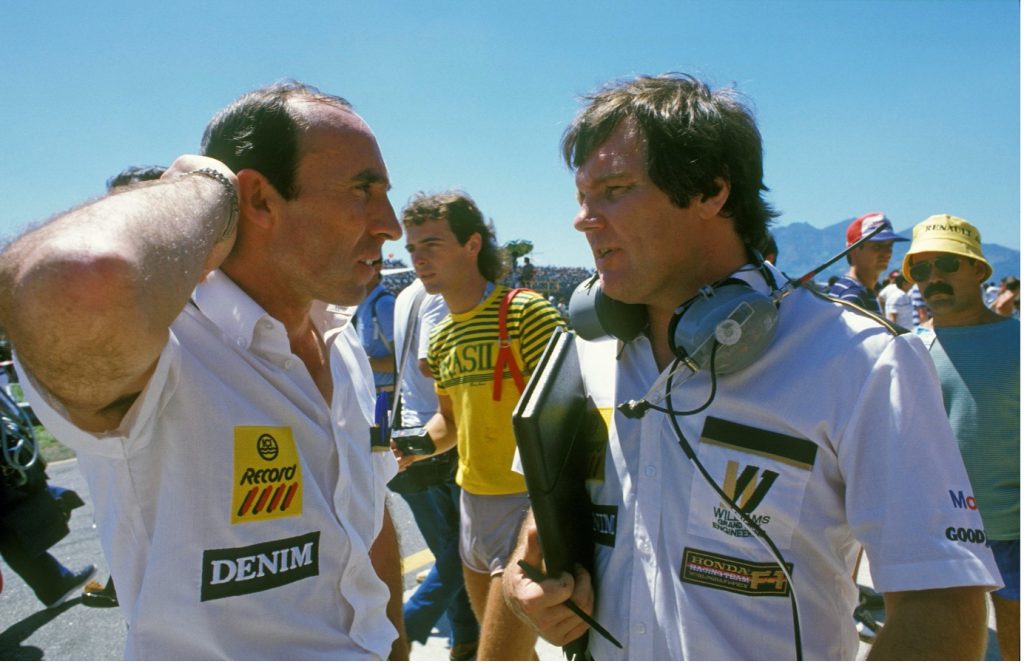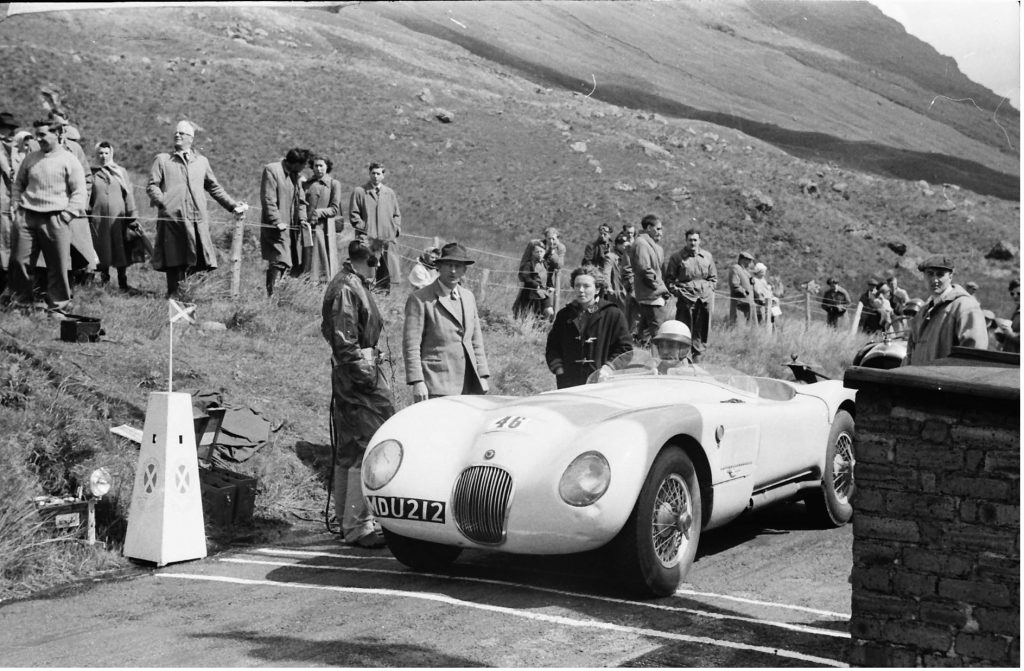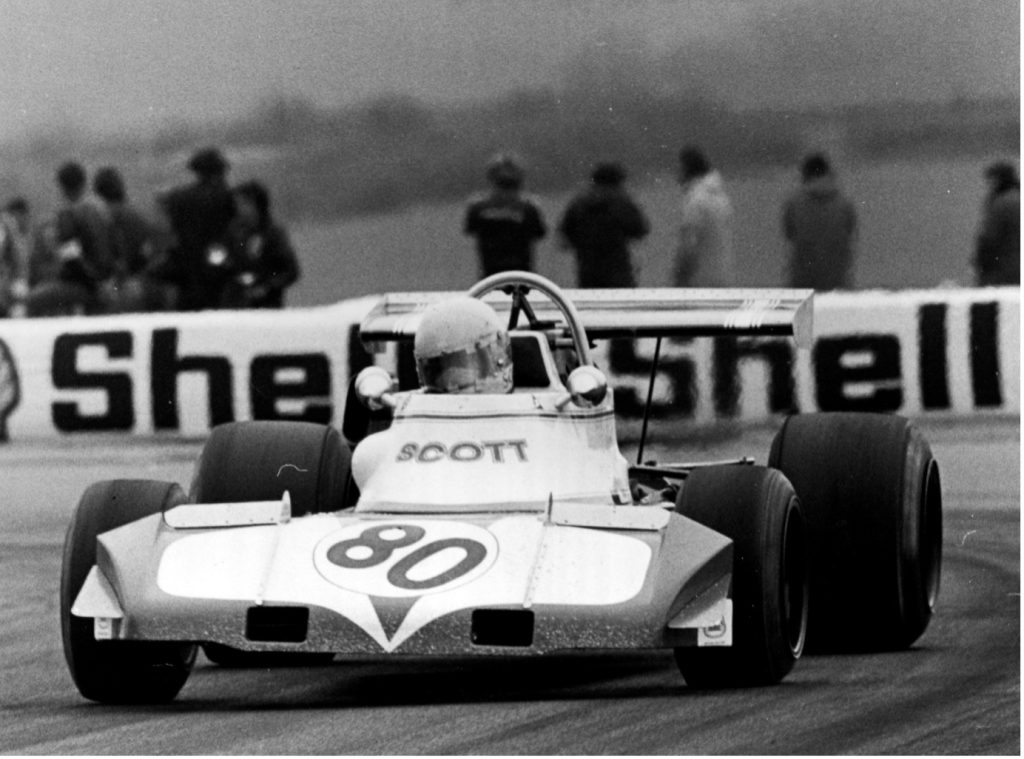
Racing car designers are something special, sometimes quirky but always fascinating people with minds that tend to look outwards rather than inwards.
Take Gordon Murray and Colin Chapman, for example, two of the more extreme members of the profession – for it truly is a profession – their designs came from nowhere and in the case of the Brabham fan car and the Lotus double chassis car, disappeared just as quickly by legislation.
However, there is one engineer and designer who is often overlooked and yet he is the only British designer who has been given a knighthood for his services to motorsport: Sir Patrick Head.
He came to mind recently when I was looking through some old notes and files and realised I had first seen Patrick’s father, Michael Head, race his C type Jaguar ( Chassis 005 that had originally been sold to Tommy Wisdom and regularly raced by Stirling Moss.)
Colonel Michael Head was a professional soldier and had started racing with one of Donald Healey’s six-cylinder Healey’s with Westland bodywork around the same time former Grand Prix Drivers Club member Ken Downing was racing a similar Healey with the more popular Elliot bodywork.
As Patrick Head recalls:
“ After WW II in which my father served as a regimental soldier in the Royal Artillery.He was involved in the evacuation from the beaches at Dunkirk having to leave everything behind, including two accordions which I understand he played well, but never continued”
“ It was apparently the sixth ship that he got on to that delivered him back to Dover. My mother said that when she picked him up he spoke hardly at all for a month and I imagine he was putting in order the terrible events and multiple deaths he had witnessed.
“Later in the war he landed in Italy, commanding a battery of 25 pounders, and was a part of the slow progress up the Italian mainland, resisted mostly by German troops.
“After the war he decided that he did not want to continue conventional soldiering and did a technical course at Shrivenham, the army’s technical training college.
“Following this he was posted to Stockholm as Assistant Military Attache from 1949-1951.
“ I was born in 1946 so I have memories of this time in Sweden,
“ As you say, he bought his lightweight aluminium-bodied Jaguar XK120 off the Jaguar stand at the Stockholm Motor Show in 1951 and had done some ice racing ( On the frozen sea in winter!) in his Healey with studded tyres.
“He made many friends in Scandinavia and regularly returned to participate in major races there including the 1955 Swedish Grand Prix for sports cars where he finished 5th in one of Duncan Hamilton’s D type Jaguars behind two factory Mercedes-Benz 300SLRs driven by Fangion and Moss and two factory Ferraris, so he was the first “privateer”.
The C type Jaguar that Michael Head bought from the factory was the first to be run with disc brakes but when it was sold to Michael it arrived with drum brakes for, at the time, Dunlop were sensitive about keeping their developments under control.

Michael Head’s army career continued but by now travelling in “civvies” a, travelling to the War Office in London by train from the family home near Woking.
He was appointed Director of Fighting Vehicles at the Fighting Vehicle Research and Development Establishment and used to test his racing cars at the banked track thereafter their substantial winter rebuilds.
“My father finally raced one of three Cooper-Jaguars ( Bernie Ecclestone bought one of the three) which initially understeered badly but after applying correction – a rear anti-roll bar I think – he won the Whitsun Trophy at Goodwood in 1957 and retired from motorsport competition at the end of that year aged 45”
In an article Patrick Head also “There are strong childhood memories, coming down to Goodwood in our MkVll Jaguar, sitting on a blanket on the grass and eating our picnic then my father would have his race. It was all part of growing up. I was only 10 years old when he raced the Cooper-Jaguar”
In later years Michael Head worked in London as chief military adviser to Sir Solly Zuckerman, the government’s chief scientist and was a part of Joint service committees where he was more impressed by representatives from the Royal Navy than by those from the army or the Royal Air Force.
Head was a distinctively practical man and prepared and worked on his own cars but sadly died of cancer in 70 at the young age of 58.
Patrick Head was born on June 5 1946, was educated at Wellington College and originally pursued a naval career at the Royal Naval College at Dartmouth but dropped out.
“I left the navy after three months and although I enjoyed it immensely when the engineer officer at Dartmouth told me that if I went to University at Cambridge, rather than the naval college at Manoden, I would not be permitted to leave after ten years, which was my intention at the time. This was completely erroneous, but I was young and naive enough to believe what I was told.
“ After six months working on the M4 extension into South Wales, I started an engineering degree at Birmingham University but spent too much time rallying and assisting Broadspeed Engineering with their racing Minis and eventually completed my degree at University College London.
“ I was cheeky enough to call Eric Broadley at Lola Cars, asking for a job in the design office. He asked me to come for an interview and I was at Lola’s the next day. After no more than five minutes talking with Eric he sold me I had better start on Monday and if I was no good I would be gone by the end of the week!”
“ It was a fantastic experience working on many differing types of car. John Barnard had joined before me, focussing alone on the small single-seater cars, but we worked together on the T290 2 litre sports car and the larger capacity 3 litre T280.
I left after 3 years to join Geoff Richardson in an engineering company, focussing mainly on 4-cylinder Ford-based engines, but my interest was the 4 cyl. VW engines for the SuperVee formula of which there was a lack of providers in the UK”
racing was being given a bucket of water and told to clean the wheels.
Meanwhile, up in Scotland, a young driver from Aberdeen, Richard Scott, was developing his own career. “ I had the idea of building my own Formula 2 car. Back in those days, Formula 2 cars were notoriously difficult to drive as everyone had copied Lotus and put the radiators at the sides. This meant there was virtually no weight at the front. The cars understeered or else, if you pushed them hard, had violent oversteer. That was ok for drivers like Ronnie Peterson but I thought it would be better to produce a car with a more even front to rear balance than those cars. I spoke to my engine man Geoff Richardson about this and he felt he couldn’t tackle it but he knew of a young freelance designer called Patrick Head and Patrick might take on the job.
“My plan had been to use my old Brabham BT38 and a whole pile of spare parts which were lying around and get Patrick to incorporate them into a new chassis design. Patrick said he would go away and think about it and then came back and told me to sell the lot and he would start from scratch. He saw it as an interesting challenge”

Patrick Head’s recollections on the project are much more succinct.
“ I was asked by Richard Scott to improve his BT38 Brabham, but was young ( and cocky) enough to suggest that he needed a completely new car. This was produced between myself and Richard’s senior mechanic, Michael Cane.
“The car was not too bad but had a short life as an F2 car as it crashed early in the season and was reinvented as a Formula Atlantic ars at which it won a few races”.
When Richard and Patrick arrived at Silverstone many people were impressed because there was nothing revolutionary about it but Patrick had designed a cast aluminium gearbox adaptor plate which put an extra five inches between the engine and gearbox so placing the driver much further forward in the cockpit. As Richard told me, the car was developed and built for less than it would have cost him to buy a production car from Brabham or March. He added that if major backing had been available, the plan was to produce Formula Atlantic and Formula B versions of the car.
By this time Patrick Head had moved away from cars and got himself into boats.
“ I was building a large ferrocement sailing boat in the Surrey Docks, but quite short of money, so when Ron Tauranac asked me to help him with his Trojan F5000 and then F1 car. I worked part-time at Trojan but again, working with Ron was a great benefit and much contributed to my own experience.
“ I had done some minor work for Guy Edwards on his F5000 car and his sports car, and at a dinner, Frank Williams mentioned to Guy that he was short of a designer, so guy suggested myself.
“ I met Frank at the Carlton Towers Hotel and he was looking very smart and myself much less so in clothes smelling strongly of Resorcinol resin, a strong-smelling wood adhesive I was using in boat building.
“ This is when Frank said to me that for any designer to be successful in Formula 1 he would have to be prepared to work 24 hours a day, seven days a week, my response being that I thought that anyone doing that would be very badly organised.
“I still got the job, but a week after I started, the deal was done to sell the majority of the company to Walter Wolf, a strong character from the oil industry.
“ Walter had bought the Hesketh cars, following the closure of the Hesketh team and with the cars came Harvey Postlethwaite, the designer.
“I got on well with Harvey, but early the following year, frank called me when I was in South Africa testing with Jody Scheckter, the Wolf driver, asking if I would join him in starting a new team.
“ I thought hard about it on the plane back from SA and agreed and we started Williams Grand Prix Engineering on March 28 1977.
“ We initially ran a single March, sold to Frank as a 1976 model but when being repaired at March following an accident, we were informed that it was a 1975 model!
To list in detail what happened next would be covering very familiar ground but it is sufficient to say that Patrick Head’s pragmatism and clear thinking in his engineering design projects led to Williams becoming one of the most successful Formula 1 teams of the modern generation.
What also marked Patrick Head was the fact that he could spot talent and brought on many young designers of the 1980s such as Frank Dernie, Ross Brawn and Adrian Newey.
Frank Williams worked hard on developing the Formula 1 team and in particular seeking out long term sponsorships from companies such as Saudia Airways and Honda but his greatest achievement was to bring Patrick Head into the team not only as a gifted engineer and designer but a perceptive strategist.
His responsibilities at Williams suddenly doubled after Frank Williams road accident in France and Williams secured another two World Championships during that period.
In 1999 Frank Williams became the first person to receive a Knighthood in Formula 1 who had not been a World Champion driver, and in 2015 it was Patrick Head who faced the Queen and received his Knighthood for services to motorsport.
“ I don’t think that it was awarded so much for my design prowess, but Franck and I started a company from zero and by the time I departed our staff was well above 500, maybe 600, as we had started a number of connected companies. Frank was most definitely the figurehead, but he was not really active within the company, even less so after his accident in early 1986,
“ Our income came from FOM and “sponsorship” and that came because we were winning races and had a high profile. Nearly all sponsorship was from outside the UK. We also had some commercial activities which were profitable and this also applied to our activities with Renault in touring car racing and BMW with Le Mans sports car racing. Both of these separate activities involved about 60 personnel and were located at different sites close to the Formula 1 team.
“ I think my knighthood more reflected the income that we generated for the UK via PAYE on our employees and other UK taxation. I once calculated that this amounted to over £1 billion”
Patrick Head was to continue as Director of Engineering until stepping down at the end of 2011.
“I left WGPE at the end of 2011, when I was 65, but have generally kept in loose contact since.
“The last ten years at Williams have been a struggle for commercial survival but in mid-2020 the company was purchased, and is under new management with much improved financial support
In retirement, Patrick Head is still kept busy and, with his wife Monica, now lives in Italy. However, no doubt he will continue to be called upon for advice.
The Grand Prix Drivers Club are proud to have him as a member.
